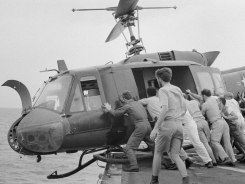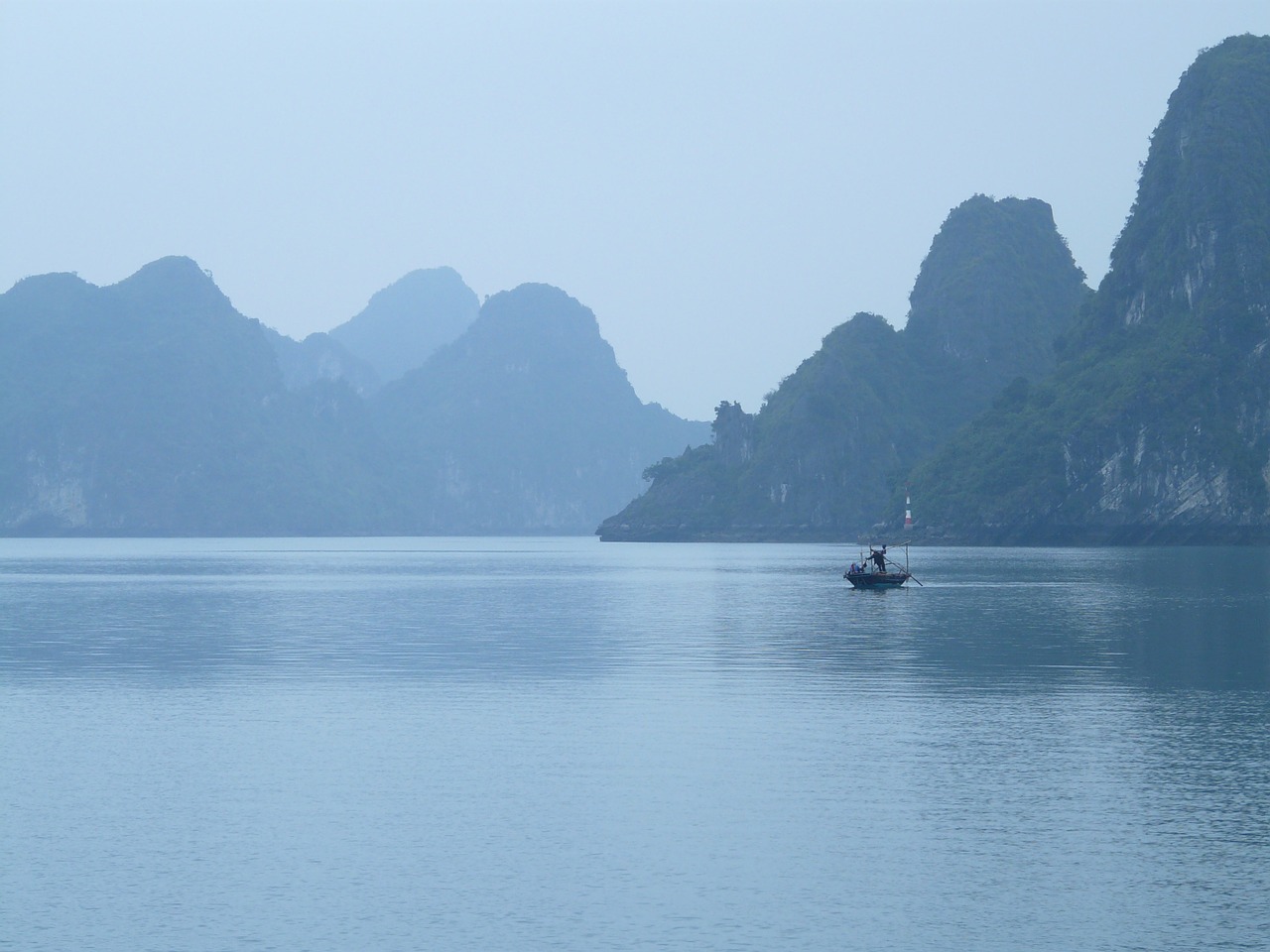The United States spent several decades embroiled in war in Southeast Asia, but the deepest involvement was from the mid-1960s through the early 1970s. When the governments of Vietnam, Cambodia and Laos all collapsed in April 1975, hundreds of thousands of people were displaced from their homes. The passage of the U.S. Refugee Act of 1980 opened the way for over 1.4 million Southeast Asian refugees to resettle in the United States.
Joseph Pham was among the early wave of Vietnamese refugees to come to Seattle.
I was born in Hanoi, North Vietnam in 1941, and I left Hanoi when the country was partitioned into two parts, North and South, in 1954 after Geneva Accord.
I learned English with the very first English class for Vietnamese. In 1962, I took a class with a British English teacher and took the examination that’s sponsored by the British Embassy. Because of that, I work for the American Embassy for some time before I was drafted. I was drafted to the Army in 1967, and I graduate from the Officer Candidate School right before the Tet Offensive in 1968. I worked with the American advisors, and in 1971, I become a language instructor at the officer language school in Saigon, teaching Vietnamese soldiers.
In 1973, the U.S. withdrew all its troops, leaving the South Vietnamese military to take over fighting the war. Only U.S. Embassy personnel and American military advisors remained. By April 1975, the North Vietnamese controlled most of the country, and the South Vietnamese capital of Saigon was about to fall.
On April the 29th , I was still an officer [in my unit]. There was mortar shelling of the Tan Son Nhat Airport, we were just about maybe one or two miles from the airport. It was terrifying because we know that we did not have equipment or ammunition, so we could not even fight. So we have to find a way out.
On the morning of 30th, which is the last day of the war, my wife was pregnant then, and she somehow managed to go to one of my neighbors who have a phone, and call me and say she was in labor. Not really, but because of that I was allowed to come home. So myself and my son and my pregnant wife on a motor bike, we went to places to find if there is any helicopter come down to pick us up or any chance that we can get out. But we had no luck.
And then we went to the Saigon pier, Bien Bach Dang. At that time, it was around noon. I heard on the radio that our last president said we had to lay down our arms, and we waiting to surrender to the Communists. So I tried again, I went to the Navy shipyard nearby. And we are among the last people to walk on that plank to the ship. We carried about five thousand people on that boat. We limped out of the Saigon pier about three o’clock in the afternoon. We raise up the white flag. And then they move all the refugees onto another boat, escorted by the U.S. Navy.
At that time, the U.S. Navy sent medical teams to different boats, and they asked if there is anyone that could speak English. I said, ‘Me!’ So they said that they needed a few interpreters, especially to help them to distribute food and medical supplies to all the ships, thirty-something ships all together, both the Vietnamese Navy and the [U.S.] merchant ships. I volunteered with other medical teams to go to all different ships to distribute food and medical supplies. And I’m very happy that I can do my part to help fellow refugees at that time.
Joseph and his family wound up on the U.S.S. Kirk, an escort ship in Operation Frequent Wind, the final stage of evacuating U.S. citizens and “at-risk” Vietnamese. When  Vietnamese Navy helicopters loaded with refugees started appearing in the sky, the commander of the Kirk decided to let them land and offload the refugees. The sailors then pushed the empty helicopters into the sea to make room for the next ones.
Vietnamese Navy helicopters loaded with refugees started appearing in the sky, the commander of the Kirk decided to let them land and offload the refugees. The sailors then pushed the empty helicopters into the sea to make room for the next ones.
When I was rescued by the Kirk, I was among the lucky few.

[We landed at] Subic Bay [Philippines] on May five or six. From Subic Bay, we were evacuated to Wake Island, and then about a month in Guam. And my wife gave birth to my daughter at the Navy Medical Center there.
From Guam, we flew to Hawai’i, and from Hawai’i to mainland, Camp Pendleton in San Diego. And from there we got to the sponsor home in Texas. Through the Red Cross, I found my sister’s family up here [in Seattle], so I request to be relocated with her family. I flew up here in January 1976.
[When] I first came to Seattle, I volunteer with [local] agencies, because there’s a lot of needs for the new arrivals. It’s very hard. The language, the jobs and everything else. At first we organized job seeking techniques, and also I helped people to fill out application for green cards in case they had not get one from the processing center in the refugee camp. And then ESL classes. Later on in the early ‘80s, I organized the citizenship class to help the people that been to the country for five years, be eligible to take the naturalization test to become citizen of United States.
I was also a volunteer interpreter because there wasn’t any certification program at that time. I worked as a volunteer interpreter to the hospital, to court. And then in the ‘90s, I work with the legal system when I became a certified interpreter, working with the program that helped the admissions of the Vietnamese kids fathered by the GIs here to settle down [after the 1988 Amerasian Homecoming Act]. Or to not be deported back to Vietnam. The Amerasian kids back home did not have any education at all; when they go to the U.S., they cannot read and write Vietnamese, let alone English. There was discrimination because [Vietnamese] look down on them. They just kind of outcast of society. They’re thrown out onto the street. They really wanted to work, but they don’t have any skills at all. It’s very hard and very sad for those folks.
Becoming a citizen was the only way for any of the refugees to ensure that they would be able to permanently stay in the U.S. For some, it was difficult to meet the standard of language and history that were needed to pass the test.
[The government] allow some of the elderly folks that stay here long enough to be able to take the [citizenship] test in Vietnamese. I was interpreter for them through the interview. We have citizenship classes teaching them U.S. Constitution and also the government structure in the U.S. Teaching them helped me learn also about the U.S., and I, myself, became a U.S. citizen in 1983.
I was sworn in at the U.S. District Court on 6th Avenue, by Judge Dwyer. Citizenship is a pride for us to be assimilated into the ‘New Found Land’. It’s kind of a mixed feeling. Just like you are now a U.S. citizen, but in my blood, I am still Vietnamese. So I kind of very proud to be both, like you’re citizens of the two countries. My original country is in Vietnam, I was born there and my blood is Vietnamese. But my name is American. Kind of mixed. Yes, yes.



Great post!
LikeLike